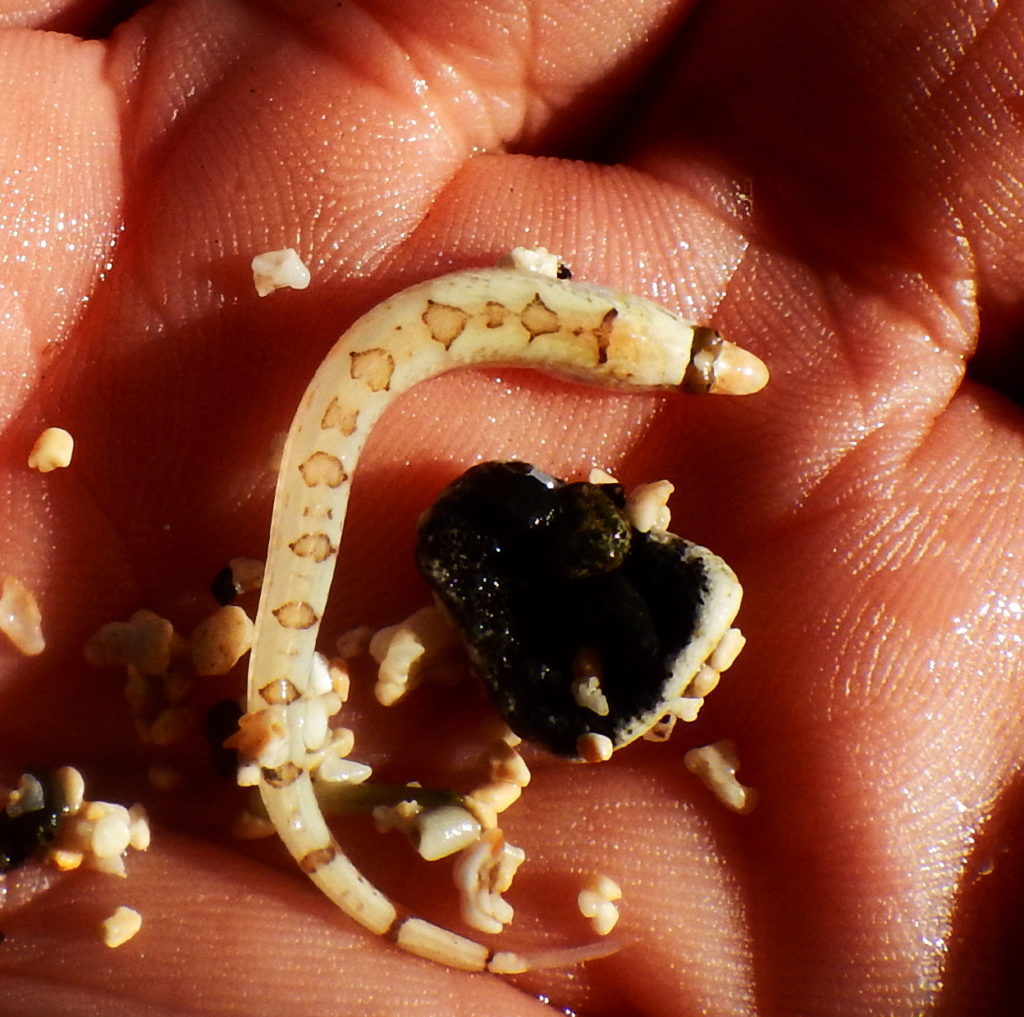Published in the Ocean Watch column, Honolulu Star-Advertiser © Susan Scott
February 4, 2017
Last weekend I made a dozen new friends. One is Ross Lang-ston, an assistant professor of zoology at Windward Community College. The others are his popeyed fish called sandburrowers.
Although they grow to nearly 3 inches long, my sandburrowers are 1 to 2 inches long — and adorable. They look like they’re wearing swim goggles.
 Hawaii is home to two breeds of sandburrowers.
Hawaii is home to two breeds of sandburrowers.
This specimen was found hanging out in the waters off Makapuu.
©2017 Susan Scott
I call the fish Ross’ because he studied Hawaii’s two species for a 2004 doctoral thesis at UH, making him the local expert on the little charmers. When he read my recent column on mole crabs, Ross emailed, wondering if I would like to meet some other shallow-water, sand-dwelling creatures. Yes! Ross brought sieves to a Makapuu beach, and we proceeded to scoop sand in 2 feet of water, as if panning for gold. When the pans hit the air, so did the fish.
We transferred the little leapers to a container filled with seawater and an inch of sand. I don’t know exactly how many we collected, because sandburrower is the perfect name for these fish. After diving for cover, they stay there.
Don’t feel bad if you’ve not seen or heard of these remarkable fish. Most of us haven’t, even though they’re plentiful. In one study off Egypt, researchers found approximately five sandburrowers per square foot, making them one of the most numerous fish in the sandy shallow waters of the Red Sea.
At least 16 species of sandburrowers inhabit the waters of the Indian and Pacific Oceans, some shallow, some deep. Hawaii hosts two, called elegant and Cooke’s. Sandburrowers live only about one year.
A sandburrower resides under the sand with only its spherical eyes above the surface. When a tiny planktonic animal drifts by, whomp! The fish nabs it, traveling four times its body length in 0.05 seconds. Watch Ross’ amazing 15-second video at goo.gl/1HF2UJ. The feeding fish look like shooting stars.
Besides lightning speed, sandburrowers have remarkable vision akin to that of chameleons, each eye moving and focusing independently. During a strike, the fish can turn 185 degrees to avoid objects in its way and still get the meal. Researchers in the Red Sea watched 2,000 strikes in slow-motion video. The fish scored 100 percent of the time.
Ross’ studies centered on the little-known reproduction system of these fish and discovered that Hawaii’s sandburrowers begin life as males and become females as they increase in size. Their floating eggs drift as plankton.
My sandburrowers now lurk in a tank in my kitchen counter, where my brine shrimp offerings cause them to explode from their sand beds. Never before have I had so much fun feeding fish I cannot see.
Thank you, Ross, for introducing us fish lovers to another of Hawaii’s marine treasures.